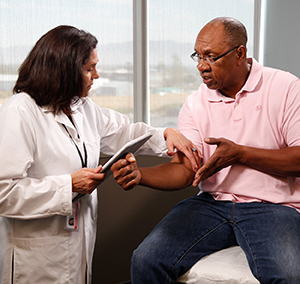Cortisone Injections
Cortisone Injections

Why have a cortisone injection?
Injecting cortisone can sometimes relieve pain for anything from a sports injury to arthritis. Your doctor may suggest an injection if rest, splints, physical therapy, rehabilitation exercises, or oral medicine doesn’t relieve your pain. Injecting cortisone is simpler than having surgery. And cortisone may provide the lasting pain relief that can help you get out and enjoy life again. A recent study showed steroid injections may actually worsen osteoarthritis of the knee. Be sure to discuss all options with your healthcare provider. Injections are usually used no more than 3 to 4 times a year in one area of the body.
Getting the injection
Your doctor will start by cleaning and possibly numbing your skin at the injection site. Next you’ll be injected with local anesthetics (for short-term pain relief) and cortisone. The injection may last a few moments. A small bandage will be put over the injection site. You’ll then be ready to go home.
After your injection
After being injected, make sure you don’t injure the treated region. But stay active. Enjoy a walk or some other mild activity. Just be careful not to strain the region that gave you trouble.
The next day
Some people feel more pain after being injected. This is normal, and it will go away soon. Applying ice for 20 minutes at a time to your injury may reduce the increased pain. Rest for the first day or two. You don’t need to stay in bed. But avoid tasks that may strain the injured region.
Cortisone injections can increase your blood sugar for several days after the injection. If you have diabetes, follow your blood sugar closely during this time. Follow your regular plan for what to do when your blood sugar is elevated.
Updated:
March 16, 2019
Sources:
McAlindon, T, Effect of Intra-articular Triamcinolone vs Saline on Knee Cartilage Volumn and Pain in Patients with Knee Osteoarthritis, JAMA (2017); 317(19); 1967-75
Reviewed By:
Hanrahan, John, MD,Image reviewed by StayWell art team.